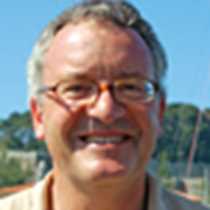At Sea
Having slipped our moorings at Banjul the colorful capital city of The Gambia as dinner was announced yesterday evening, we sailed smoothly overnight to awake to more invigorating ocean breezes. Our course is north-westward for the Cape Verde archipelago, some 385 miles (620km) off the great bulge in the western coast of Africa. Like so many other islands off the west African coast these islands, previously uninhabited, were used as secure holdings on which to 'season' slaves in transit from the coasts to the slave ships which would transport them to the Americas across the notorious Middle Passage. Over 10 million Africans followed this sea route of no return, the principal destinations being Brazil (4 million) and the British West Indies (2 million), with half a million slaves going to Britain's American colonies (the United States after 1781). It is estimated that a tenth of the cargo was lost through disease during the Middle Passage, making that name synonymous with suffering ever since.
The consequences of this trade are unique in human history with two Europes and two Africas on either side of the Atlantic Ocean. The Middle Passage formed one leg of the Triangular Trade, with industrial good from Europe, mainly from Britain and France, brought down to west Africa to exchange for a human cargo that was bound for slave labor in the plantations that had been established in the new world. Those plantations were monocultures, principally of sugar but also of cotton, cocoa, coffee and cotton. Those cash crops were shipped across the north Atlantic to Europe for added value through manufacture. It is impossible to over estimate the importance of this trade to the development of the Atlantic economy in the eighteenth century. Much of Britain's Industrial Revolution was financed through the trade, coal mines were sunk, quarries opened using money from the banks of Liverpool and Bristol. Along the Atlantic coast of France, the elegant and extravagant architecture of eighteenth-century cities like Nantes, La Rochelle and Bordeaux is a consequence of the slave trade wealth. The British abolitionist campaigner William Wilberforce once rounded on the city fathers of Liverpool and telling them that "every brick in your city has been cemented with a Negro's blood."
A varied menu of presentations prepared us for our visit to the Cape Verde islands, whose contemporary populations are all descended from slaves, some of whom escaped into the hinterland of these volcanic islands. In the morning, Jim Kelley explained the geology of the Atlantic Ridge and its history of volcanism, and Robyn Woodward charted the course of Portuguese exploration in these waters. In the afternoon we were treated to an incandescence of Global Luminaries, with a lively and informative presentation on the Cape Verde Islands by the former U.S. Ambassador to the country, Vern Penner and, after afternoon tea, to a mind-expanding introduction to sacred ethnography by Wade Davis, explorer-in-residence at National Geographic.




